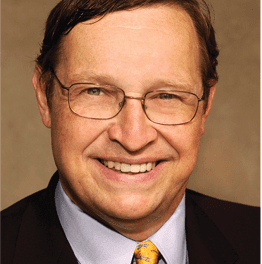Staff Standpoint | June 2016 Hearing Review

Clearly, professional treatment for hearing loss greatly benefits the consumer and is the “gold standard,” but cost and access remain practical concerns. Similarly, the FDA’s current system for distinguishing regulated hearing aids (Class I and II medical devices) from unregulated personal sound amplification products (PSAPs, which are not intended for hearing loss) is confusing to consumers and unfair to both hearing aid and PSAP manufacturers—and rarely leads to enforcement.
But what can the FDA do, if anything? On April 21, it held a workshop, “Streamlining Good Manufacturing Practices (GMPs) for Hearing Aids,” at the FDA White Oak Campus in Silver Spring, Md. The meeting was dedicated to reviewing current FDA rules on hearing aids, including the current Quality System Regulation (QSR) and whether third-party voluntary standards could replace mandatory FDA controls for a new “basic” or over-the-counter (OTC) class of hearing aid, as recommended in the October 2015 report by the President’s Council of Advisors on Science and Technology (PCAST).
The workshop was divided into morning and afternoon sessions. The morning session was devoted to background information by FDA staff, as well as updates from members of the PCAST and IOM committees, followed by 22 presenters in a Public Speakers’ Session representing hearing device and “wearables” manufacturers, professional and trade organizations, and consumer advocacy groups. The afternoon session was divided into three topics: 1) Hearing Aid Access; 2) PCAST’s Proposed Stratification of Hearing Aids; and 3) Quality Standards for Manufacturing Hearing Aids.
It is impossible to present all the views of the speakers, which ranged from keeping things the way they are now, to abolishing QSRs (and/or essentially all FDA involvement) in hearing care. However, the vast majority of speakers supported keeping the current QSRs that oversee the development and manufacture of Class I and Class II hearing aids. Most hearing aid (and some hearable) manufacturers said that QSRs were neither a significant impediment to technological progress nor added significantly to the cost of the devices. Likewise, the members of the professional and consumer groups maintained that the current system offers at least some reassurance that the products perform as intended, demonstrate the basic safety measures and function expected of a medical/hearing device, and offer some kind of system for complaint handling and recalls.
The key debate is if an OTC class of hearing aids—with clear labeling or warnings and a defined output range for mild to moderate losses—would be beneficial and lead to more innovation and competition for the market, and greater affordability and accessibility for consumers. Etymotic Research’s Mead Killion and Gail Gudmundsen, both of whom spoke at the workshop, proferred such a system as far back as 2004. However, Brent Edwards of Earlens, and the former VP of Research at Starkey, pointed out that the market penetration of hearing aids is probably more like 50% rather than 25-30% because of issues relating to what constitutes a “hearing aid candidate” and the self-reporting of hearing loss (see his 2006 article at http://goo.gl/Wr2UEH). And that’s the rub: a key factor is the consumer grappling with their hearing needs. As Edwards pointed out, we have PSAPs and hearables for normal-hearing people, and we have hearing aids for those with confirmed (mostly moderate to severe) hearing loss. The tricky question is, What do we do about those with milder and “borderline” losses?
You can watch the FDA workshop at: http://goo.gl/dw7dEM
Also, The National Academy of Sciences has announced there will be a public release of the report by the Institute of Medicine’s (IOM) Committee on Accessible and Affordable Hearing Health Care for Adults, which will take place at 11:00 AM on Thursday, June 2, 2016 at the Keck Center of the National Academies of Sciences, Engineering, and Medicine in Washington, DC.




